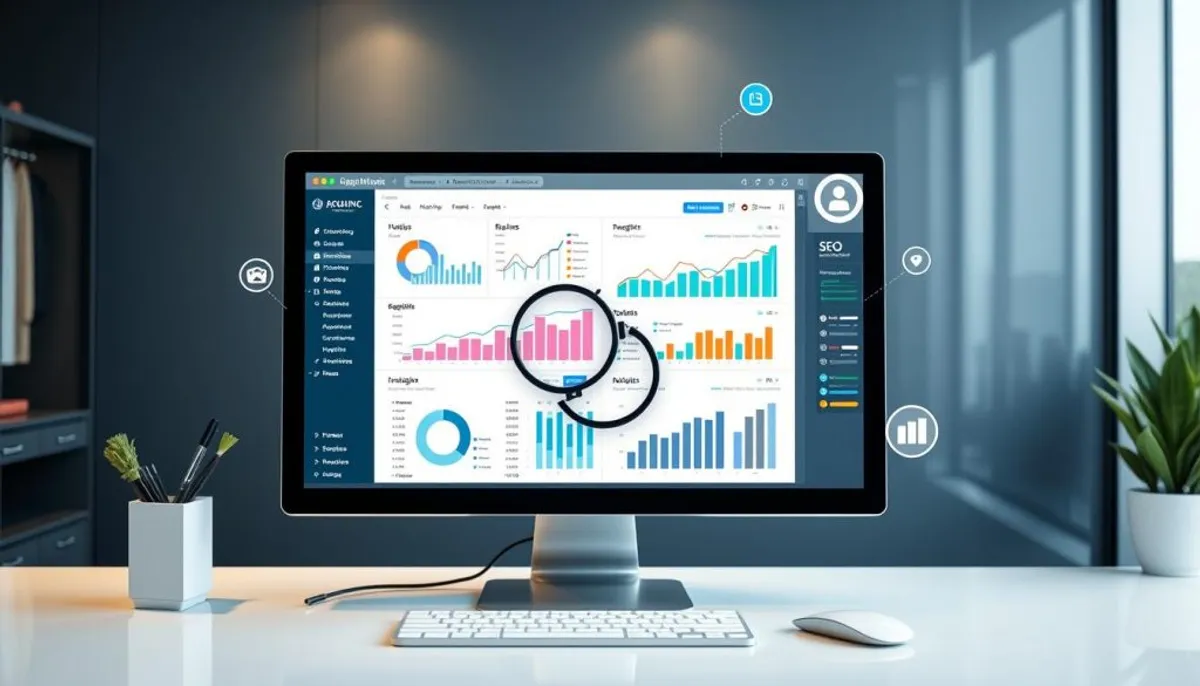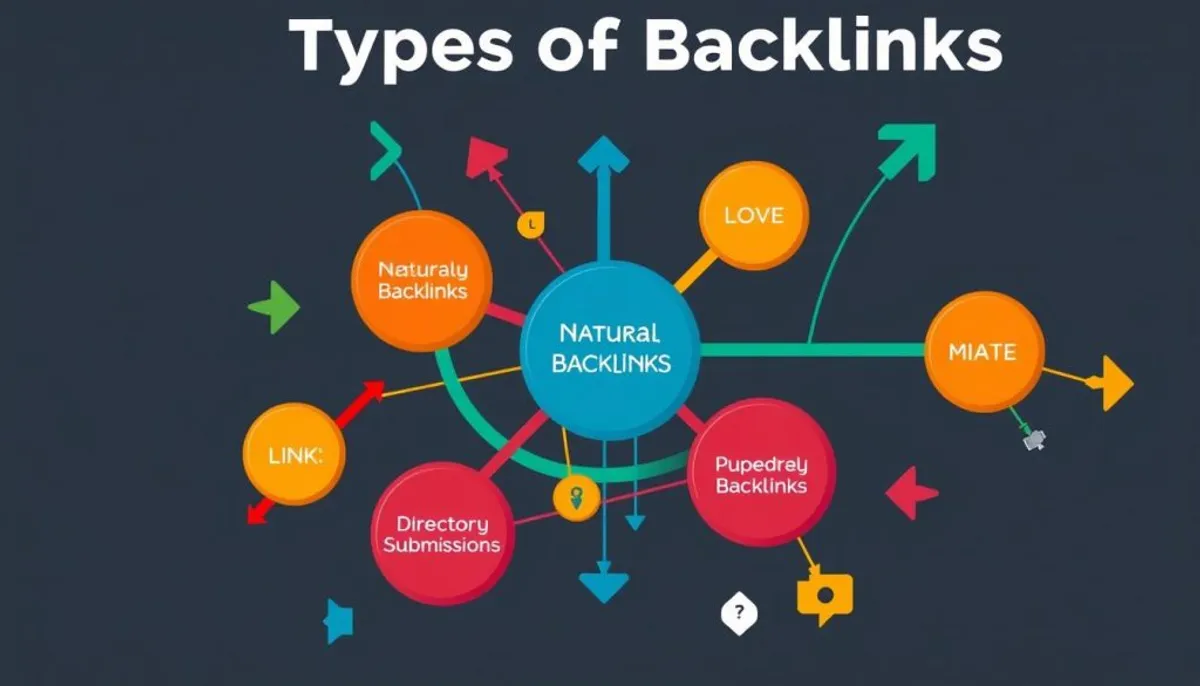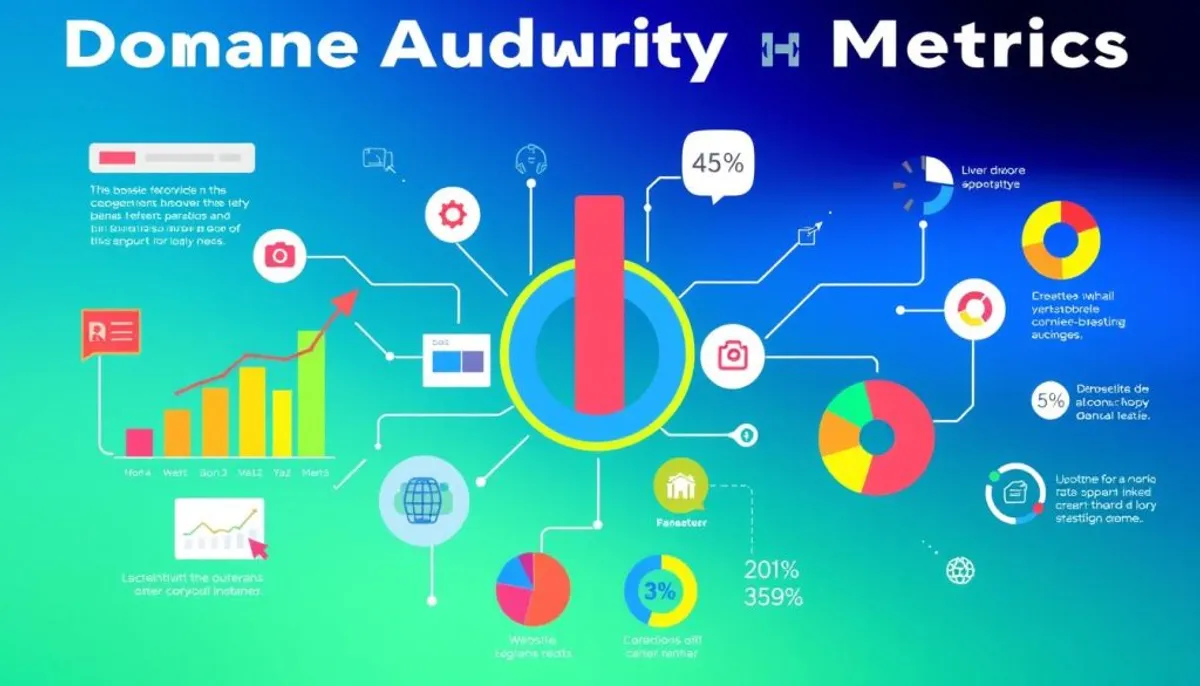In the realm of SEO, backlinks are invaluable. They are essential for enhancing your website’s authority and boosting search rankings. But, how do you uncover your backlinks? This guide will lead you through the process using free SEO tools.
Did you know Backlinko.com boasts 2.2 million backlinks from over 69,400 unique domains? This showcases the impact of effective link building. We will delve into strategies for discovering and analyzing your backlinks. This will aid in your ascent up the search engine rankings.

Why is this important? The first organic search result on Google sees an average click-through rate of 27.6%. This is 10 times more likely to engage than the 10th position. By grasping your backlink profile, you’re making a significant stride towards the coveted top spot.
We will discuss free tools for backlink analysis, such as Google Search Console and Ahrefs Free Backlink Checker. You will learn how to utilize these tools to uncover your backlinks and gain insights into your website’s SEO performance.
Are you ready to explore the secrets of your backlink profile and enhance your SEO strategy? Let’s embark on this journey together!
Understanding Backlinks and Their Importance in SEO
Backlinks are vital in off-page SEO, acting as digital endorsements from other websites. They indicate to search engines that your content holds value. Exploring backlinks reveals their critical role in enhancing your link profile and authority.
What Are Backlinks and Why They Matter
Backlinks are links from other websites pointing to yours. They signify to search engines that your content is endorsed by others. Google has stated that backlinks are among their top ranking factors. A study showed that the number of sites linking to you is more correlated with Google rankings than any other factor.
The Role of Backlinks in Search Engine Rankings
Search engines assess your site’s authority and relevance through backlinks. High-quality backlinks can notably elevate your rankings. For instance, an ultimate guide to YouTube SEO garnered over 5,900 backlinks from 2,100 domains, highlighting the impact of compelling content on attracting links.
Quality vs. Quantity in Backlink Profiles
In backlink monitoring, quality is more important than quantity. A single high-quality backlink can be more influential than numerous low-quality ones. Aim for links from reputable sites within your industry. It’s essential to avoid black hat link building strategies to evade Google’s Penguin filter, ensuring a clean link profile.
| Backlink Type | SEO Value | Risk |
|---|---|---|
| High-quality, relevant | High | Low |
| Low-quality, irrelevant | Low | High |
| Dofollow | High | Low |
| Nofollow | Moderate | Low |
Different Types of Backlinks Explained
Backlinks are vital in SEO, with Google highlighting them as a top three ranking factor. We’ll delve into the various backlink types and their effects on your site’s visibility.

Dofollow links are the most beneficial for SEO. They transfer authority from one webpage to another, enhancing your domain authority and search rankings. On the other hand, nofollow links don’t pass authority but can still boost your site’s traffic.
UGC links originate from user-generated content, such as comments or forum posts. Although they may not directly affect rankings, they can increase your site’s visibility. Sponsored links, indicating paid partnerships, should be used with caution to avoid penalties.
| Backlink Type | SEO Value | Traffic Potential |
|---|---|---|
| Dofollow | High | High |
| Nofollow | Low | Medium |
| UGC | Low | Medium |
| Sponsored | Low | High |
A diverse backlink profile, including all types, fosters a natural link pattern. Quality is more important than quantity – a single high-quality backlink can outperform many low-quality ones. Backlinks from authoritative, relevant sites carry more weight, helping search engines better understand your content.
How to Find Your Backlinks Using Free Tools
Understanding your backlinks is key to SEO success. We’ve curated some effective free backlink checker tools to enhance your link-building strategy.
Google Search Console Method
Google Search Console is a free SEO tool that offers basic backlink insights. It reveals which sites link to yours and the anchor text they use. Although not as detailed as paid options, it’s an excellent starting point for backlink analysis.
Ahrefs Free Backlink Checker
Ahrefs provides a free backlink checker. It offers a glimpse into your backlink profile, including top referring domains and anchor texts. The tool updates every 15 minutes, ensuring you receive up-to-date data for your analysis.
Ubersuggest Backlink Analysis
Ubersuggest is a user-friendly backlink analysis tool. It provides insights into your domain authority, backlink count, and referring domains. The free version has limitations but still offers valuable data for your SEO strategy.
UnlimitedVisitors.io Integration
UnlimitedVisitors.io combines backlink monitoring with other SEO tools. It tracks your backlinks automatically and aids in creating content to attract more high-quality links. This integration makes it a powerful ally in your SEO toolkit.
Utilizing these free backlink checker tools will provide you with valuable insights into your link profile. Remember, quality is more important than quantity when it comes to backlinks. Aim to earn links from reputable sites in your niche to enhance your SEO performance.
Understanding Backlink Metrics and Authority Scores
Backlink metrics are vital for evaluating your website’s SEO performance. We’ll explore key indicators that assess the strength and quality of your backlink profile.
Domain Rating and Domain Authority
Domain Rating (DR) and Domain Authority (DA) are key metrics for evaluating a website’s link popularity. These scores range from 0 to 100, with higher numbers indicating a stronger backlink profile. Ahrefs calculates DR, while DA is a Moz metric. Both consider the number and quality of referring domains.

Link Trust and Spam Scores
Link trust and spam scores are crucial for identifying potentially harmful backlinks. Majestic’s Trust Flow rates a site’s trustworthiness, with scores below 15 often seen as untrustworthy. Semrush’s Authority Score considers spam indicators, including Private Blog Networks (PBNs) and identical backlink profiles. A higher score indicates a more trustworthy domain.
Referring Domains vs Total Backlinks
The number of unique referring domains is more valuable than the total backlink count. A diverse range of quality referring domains signals a natural and robust backlink profile. This metric is essential for evaluating your link-building efforts and overall SEO strategy.
| Metric | Scale | Provider | Key Factors |
|---|---|---|---|
| Domain Rating (DR) | 0-100 | Ahrefs | Link popularity, potential search traffic |
| Domain Authority (DA) | 0-100 | Moz | Link profile strength, ranking potential |
| Trust Flow | 0-100 | Majestic | Site trustworthiness |
| Authority Score | 0-100 | Semrush | Link power, organic traffic, spam factors |
Analyzing Your Competitor’s Backlink Profile
Competitor analysis is a crucial strategy in SEO. By examining your rivals’ backlink profiles, you can find valuable link building opportunities. This can significantly improve your own SEO efforts. Let’s explore the process of backlink gap analysis and its benefits for your website’s performance.
To begin, use tools like Semrush’s Backlink Analytics or Ahrefs to explore your competitors’ backlinks. These platforms provide authority scores from 1 to 100, enabling you to evaluate the quality of domains linking to your rivals. Aim for sites with scores of 75 or higher for excellent link building prospects.
The Backlink Gap tool is particularly useful. It allows you to compare backlinks across entire websites, specific sections, or individual content pieces. Use filters like “Best,” “Weak,” and “Unique” to identify domains that link to competitors but not to you.
| Filter Type | Description | Opportunity |
|---|---|---|
| Best | Domains linking to all competitors | High-value targets |
| Weak | Sites linking more to competitors | Potential for stronger relationships |
| Unique | Exclusive links to one competitor | Untapped link sources |
When conducting your analysis, consider factors like domain authority, trust flow, and citation flow. Apply filters such as location and authority score range to narrow down your prospects. This targeted approach will help you focus your outreach efforts and maximize your link building success.
Remember, competitor backlink analysis isn’t just about copying links. It’s about understanding your industry’s link landscape and finding unique opportunities to enhance your SEO strategy. By leveraging these insights, you can close the backlink gap and improve your website’s search engine rankings.
Essential Metrics for Backlink Analysis
Backlink analysis is vital for grasping your website’s SEO performance. We’ll delve into critical metrics for assessing your backlink profile effectively.
Anchor Text Distribution
Anchor text analysis uncovers how other sites describe your content when linking to it. A balanced mix includes branded, naked URL, generic, and keyword-rich anchors. Strive for diversity to sidestep over-optimization penalties.
Link Attributes
Link attributes significantly influence how search engines view backlinks. The two primary types are dofollow and nofollow. Dofollow links contribute to SEO value, whereas nofollow links do not. A balanced profile should feature both.
| Attribute | SEO Value | Usage |
|---|---|---|
| Dofollow | High | Editorial links, guest posts |
| Nofollow | Low | Comments, social media, paid links |
Geographic Link Distribution
The geographic spread of links affects your site’s relevance across regions. It’s crucial if targeting specific countries or markets. A diverse geographic profile enhances global SEO efforts.
By concentrating on these metrics, you’ll uncover valuable insights into your backlink profile’s strengths and weaknesses. Remember, quality is more important than quantity in backlink building.
Identifying Toxic Backlinks and Taking Action
Toxic backlinks can severely damage your website’s search engine rankings. It’s crucial to identify and address these harmful links to safeguard your site’s SEO health.
Signs of Harmful Backlinks
Toxic backlinks often originate from low-quality sources or employ manipulative tactics. Be on the lookout for these warning signs:
- Links from spammy websites or link farms
- Sudden spikes in backlink numbers
- Unnatural anchor text patterns
- Links from irrelevant or unrelated niches
Using the Google Disavow Tool
The Google Disavow Tool enables you to instruct Google to disregard specific links. Here’s how to leverage it:
- Create a list of toxic backlinks
- Format the list as a text file
- Upload the file to the Disavow Tool
- Monitor your site’s performance after disavowing
Regular Backlink Audit Process
Regularly auditing your backlinks is essential for maintaining a healthy link profile. Follow these steps:
| Step | Action | Frequency |
|---|---|---|
| 1 | Use tools to analyze your backlink profile | Monthly |
| 2 | Identify potentially harmful links | Monthly |
| 3 | Attempt to remove toxic links manually | As needed |
| 4 | Use the Google Disavow Tool for remaining toxic links | Quarterly |
| 5 | Monitor your site’s SEO performance | Weekly |
By being proactive and vigilant, you can shield your site from the detrimental effects of toxic backlinks. This ensures a robust SEO foundation.
Leveraging Backlink Data for SEO Strategy
Backlinks are essential for Google’s ranking algorithm, with 95% of web pages lacking them. Analyzing your backlink profile helps shape a robust SEO strategy. This boosts your website’s authority and visibility. Identify the content types that attract quality backlinks and create more of it.
Competitor backlink data is key to guiding your content strategy. It reveals gaps and new opportunities. Quality backlinks from reputable sites in your niche are more valuable than quantity. They significantly impact your search engine rankings.
Utilize tools like Ahrefs or Semrush for regular backlink tracking. These tools provide detailed analysis, helping you evaluate link quality, diversity, and relevance. By monitoring and adapting based on this data, you’ll enhance your website’s authority and rankings over time.
RelatedRelated articles



